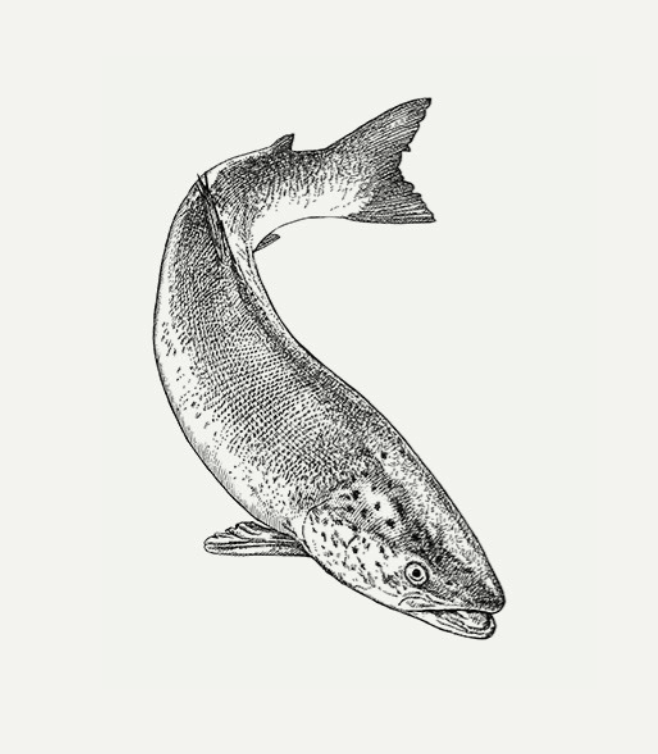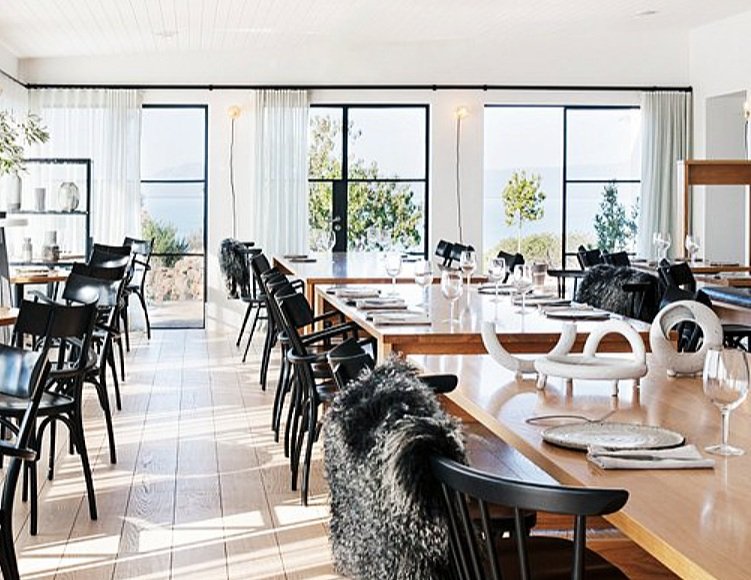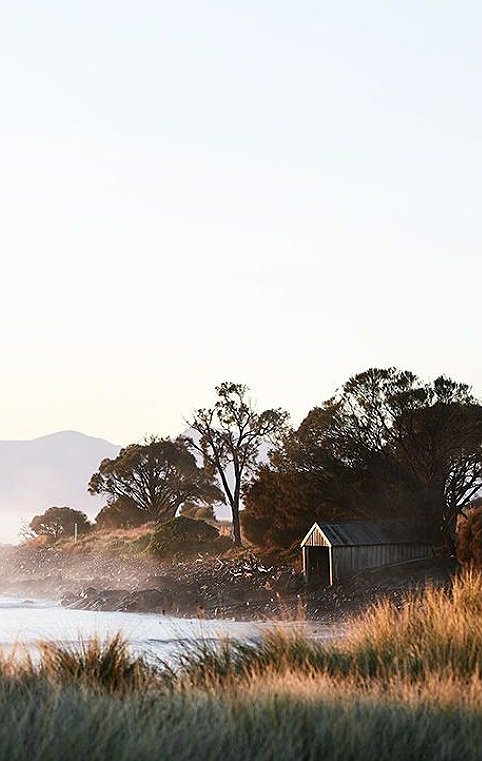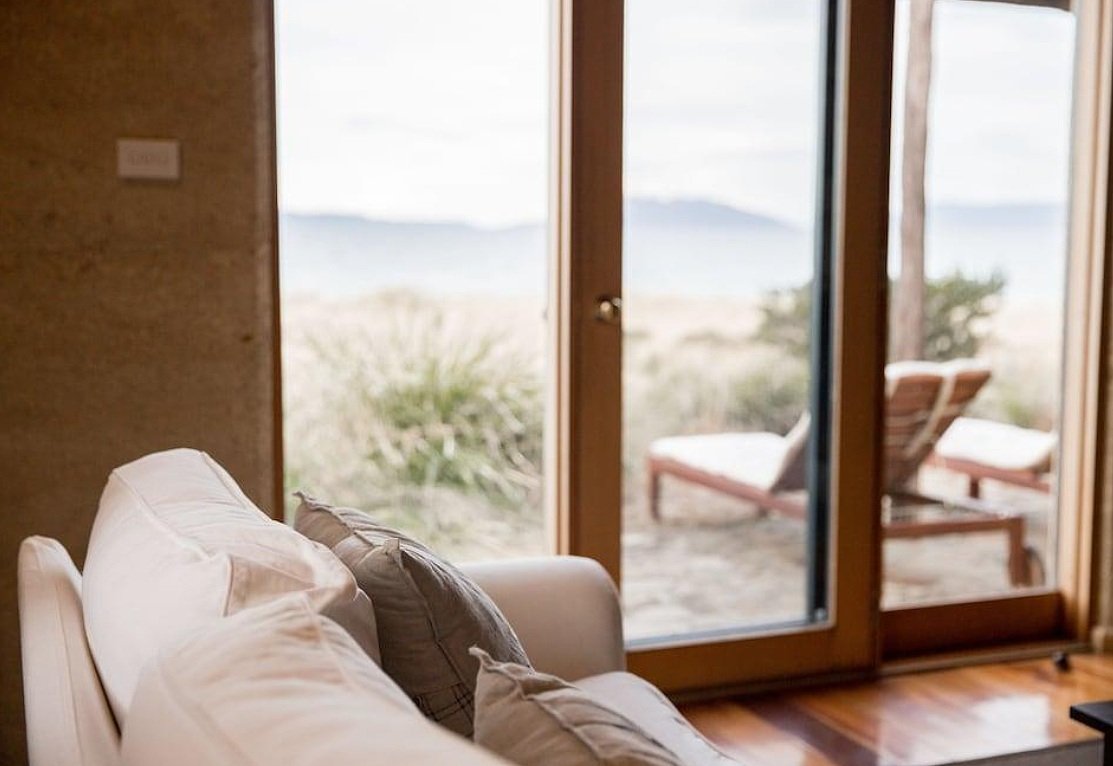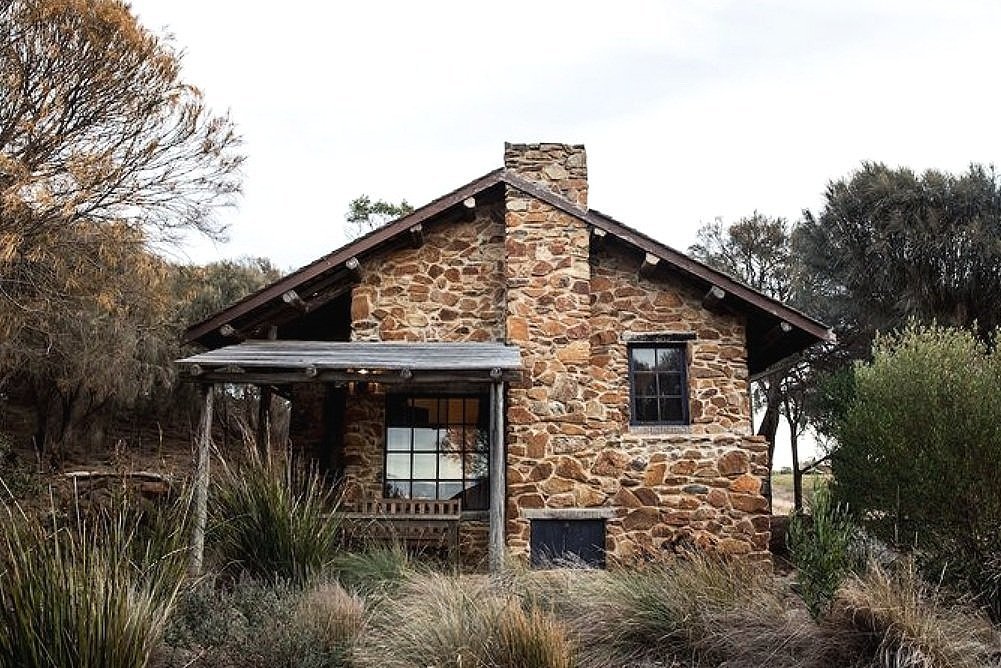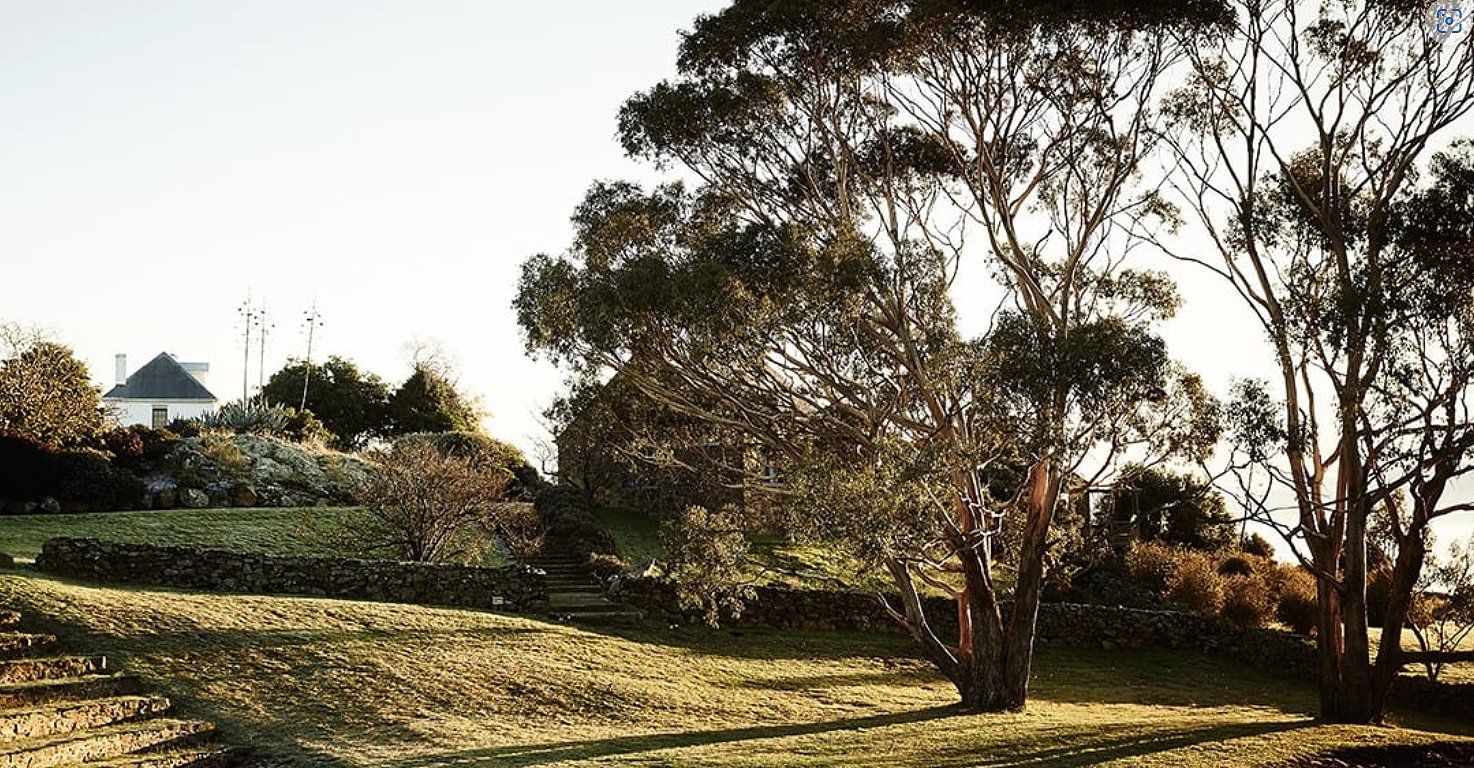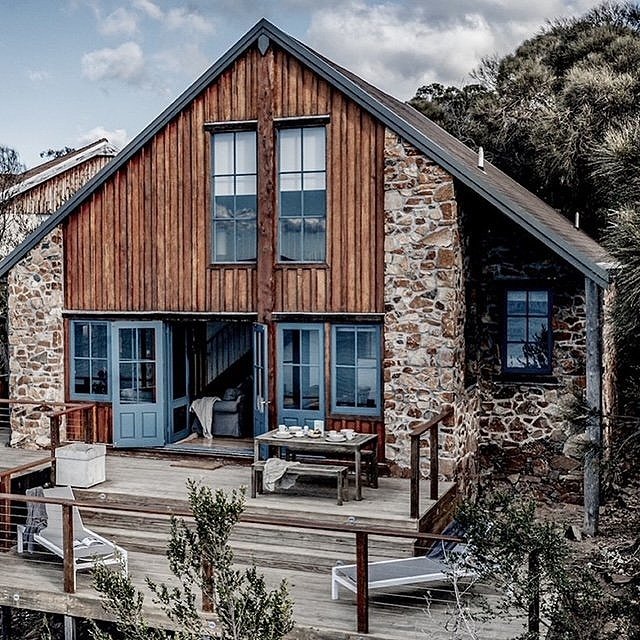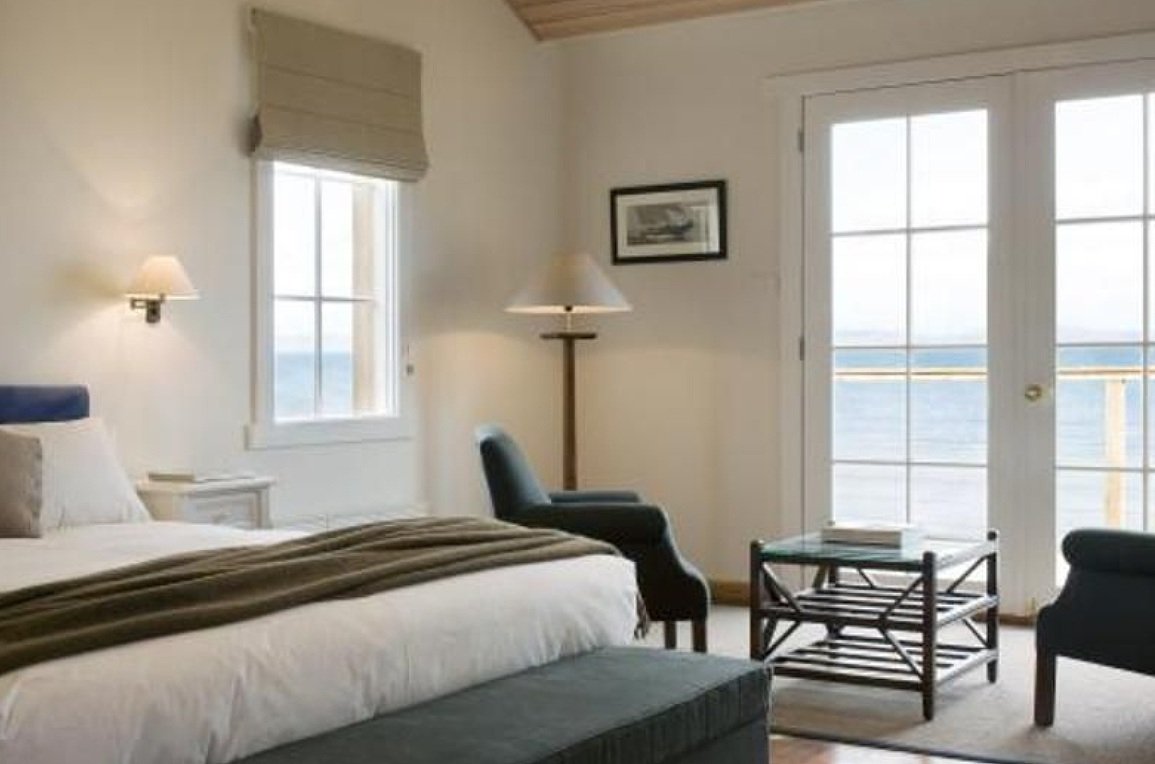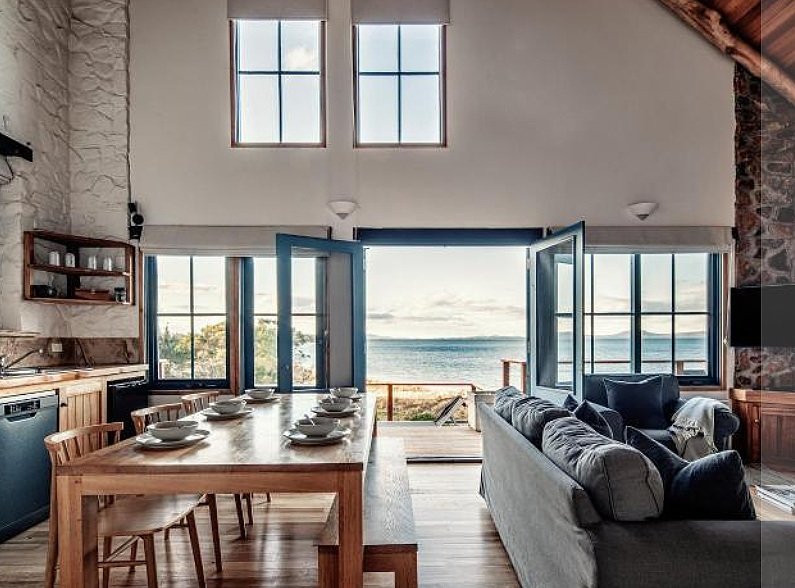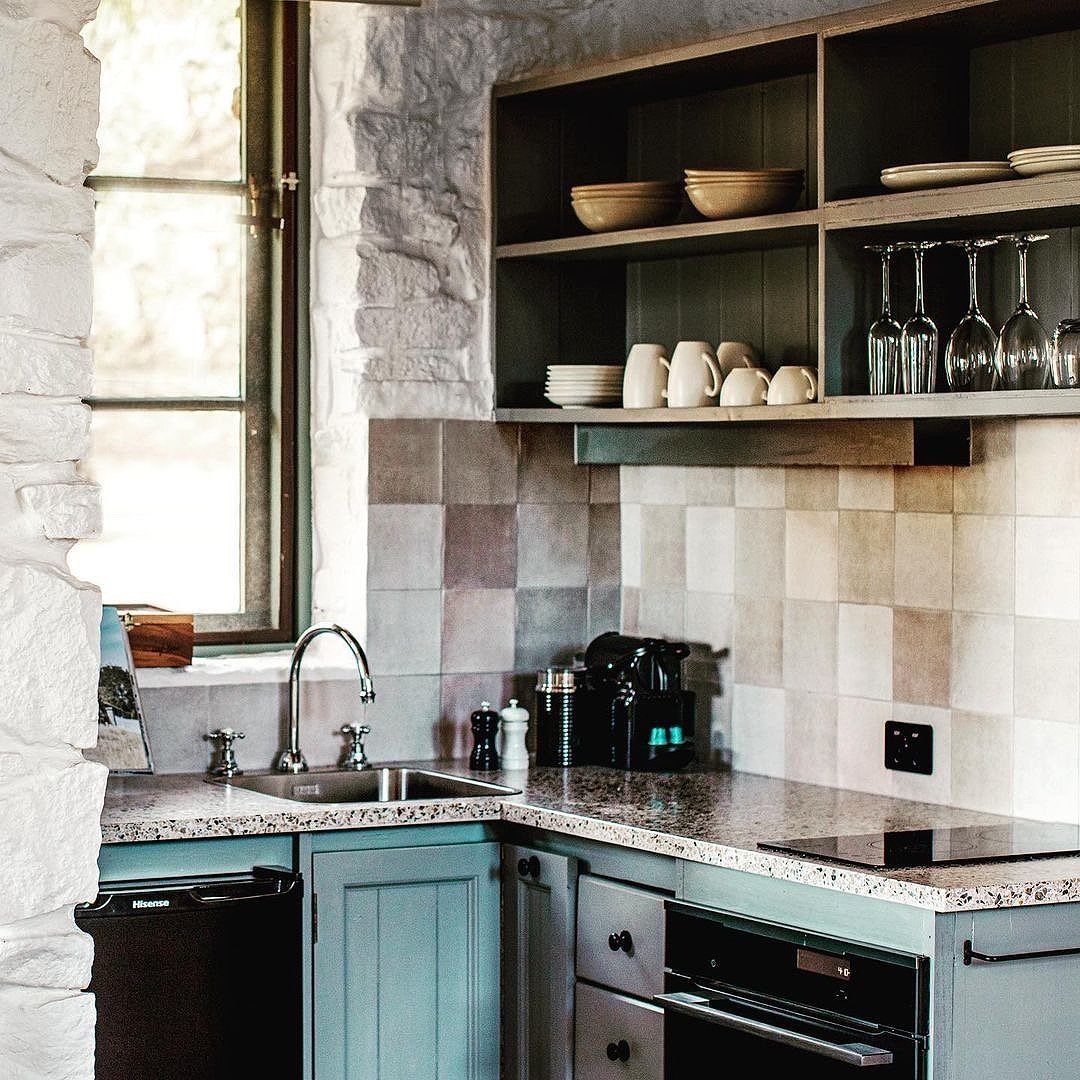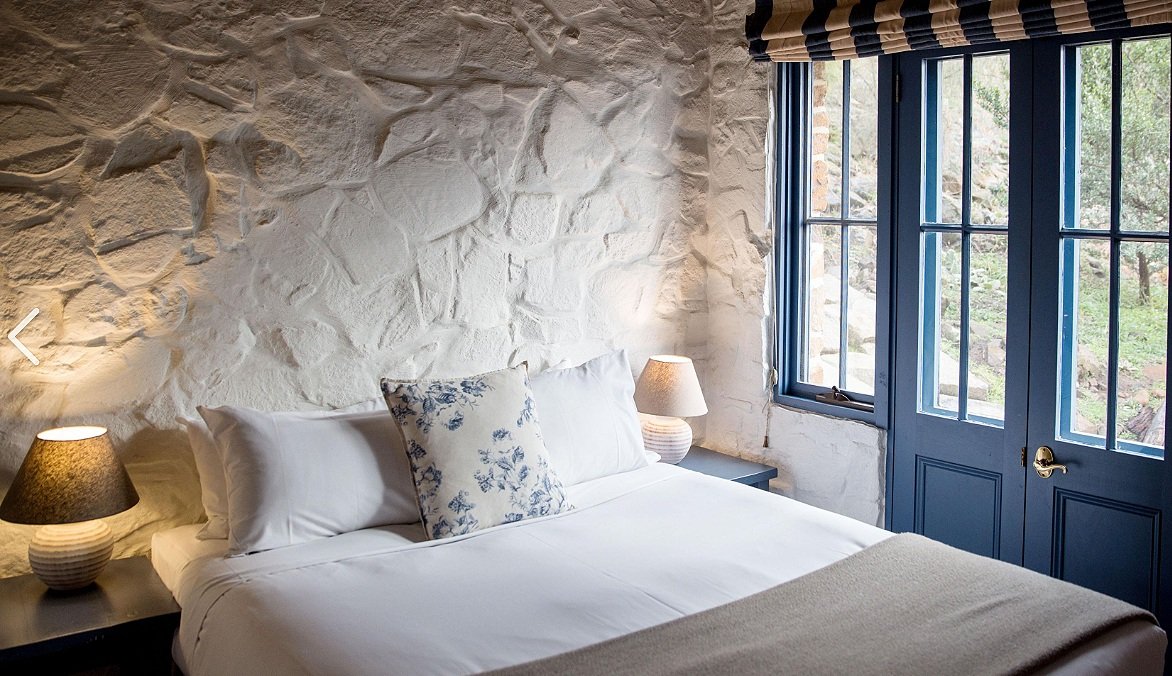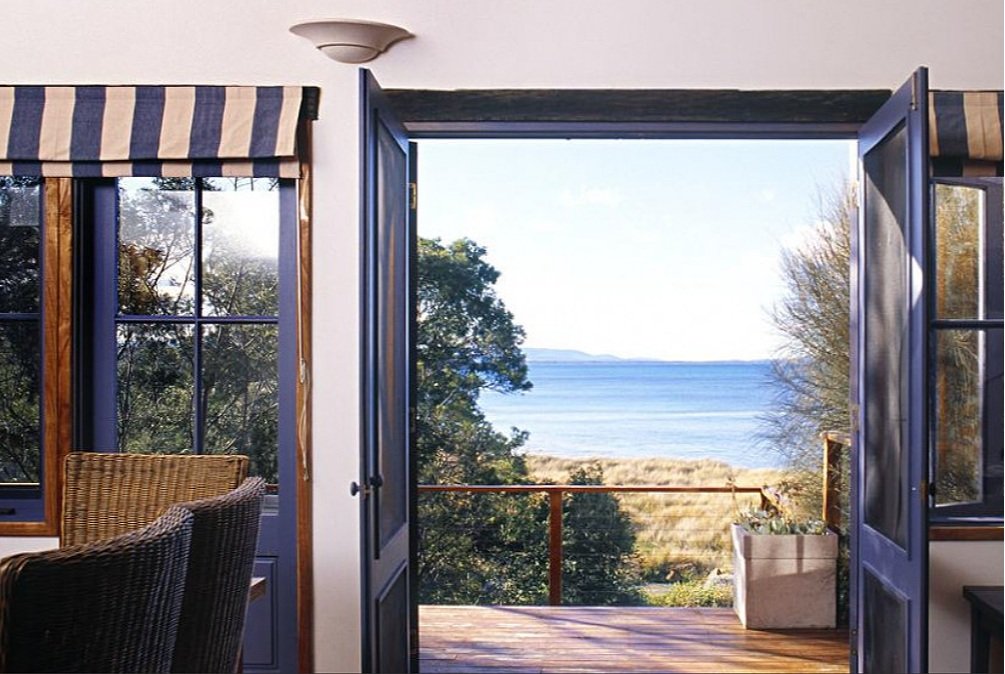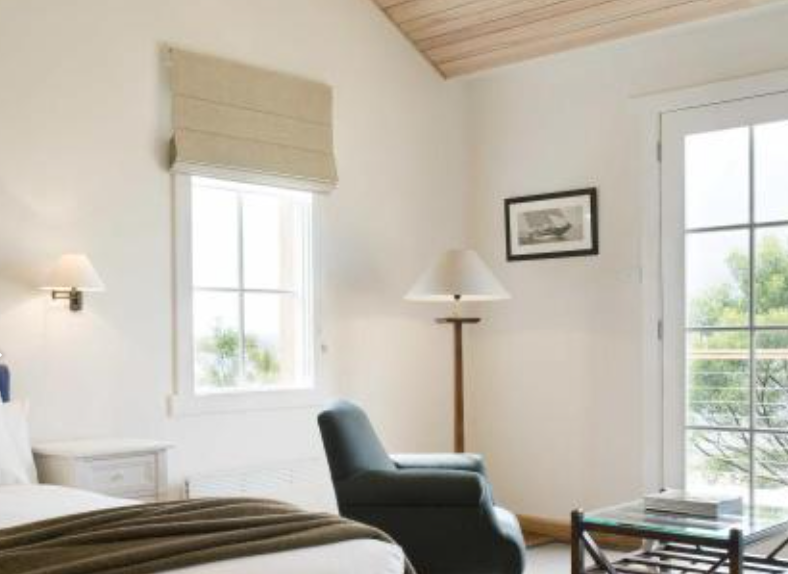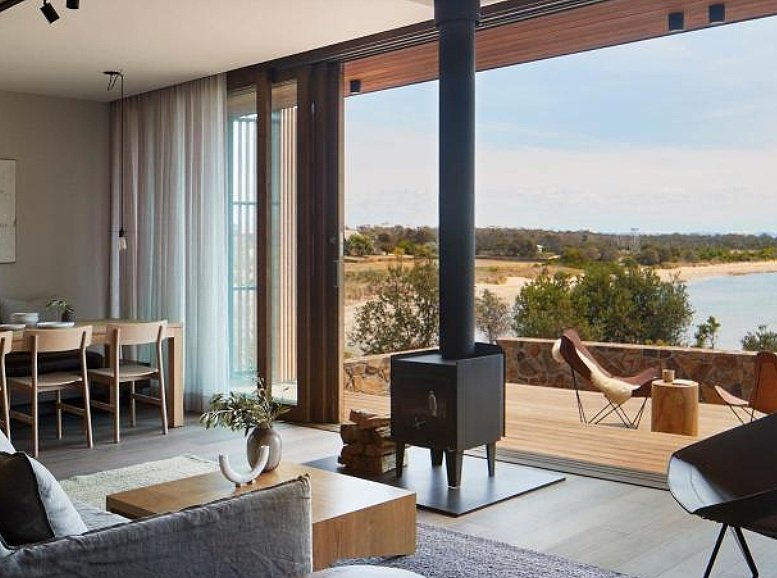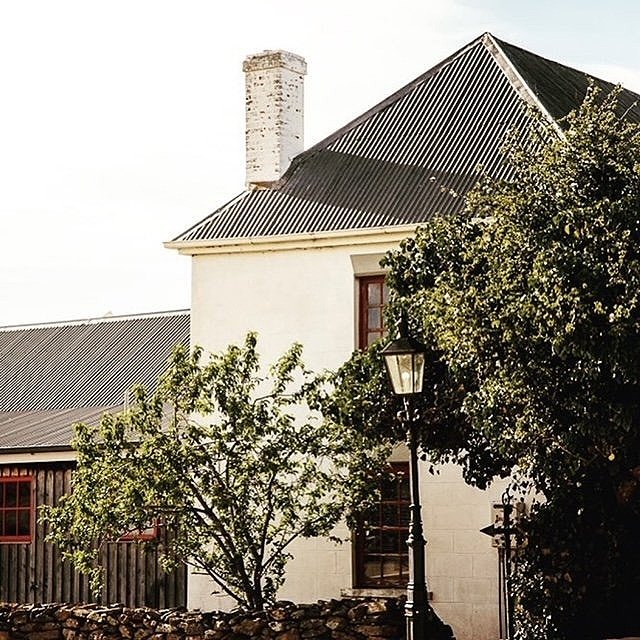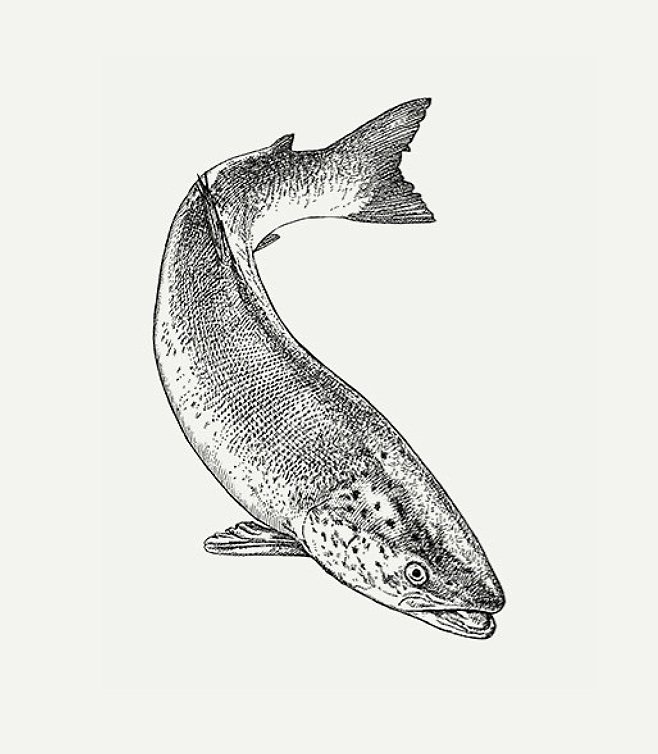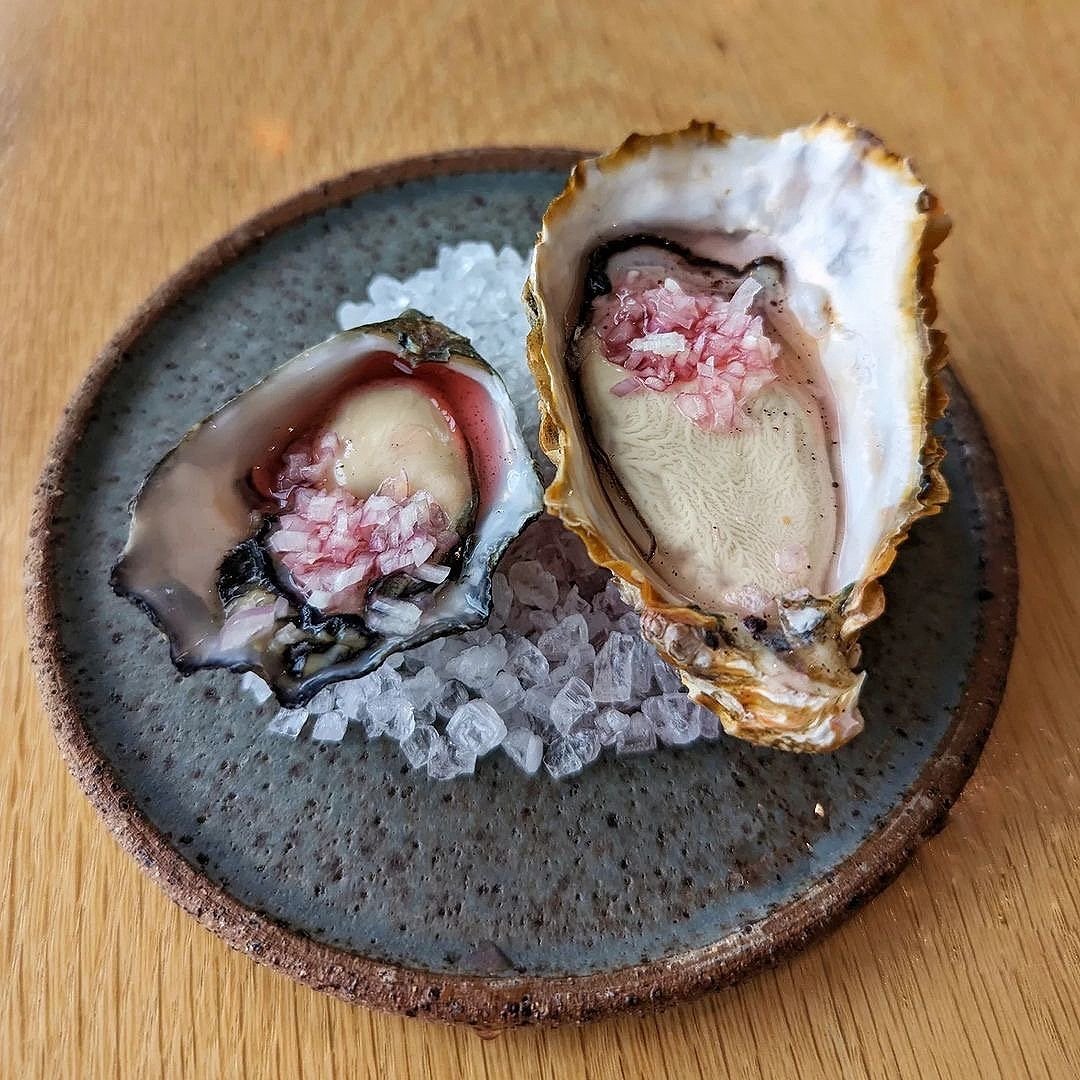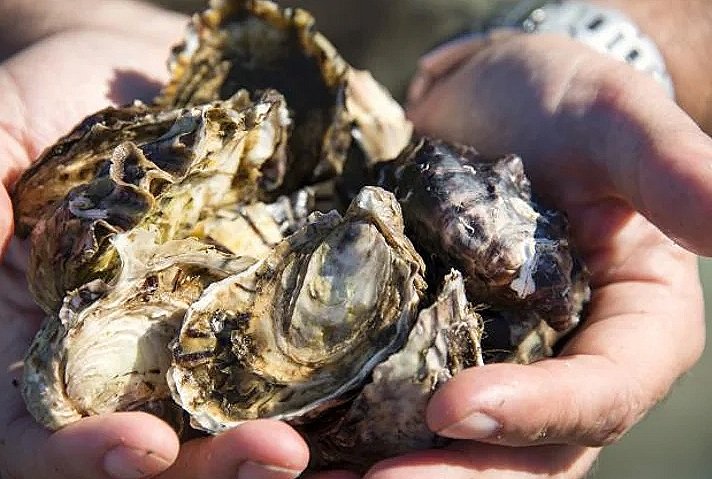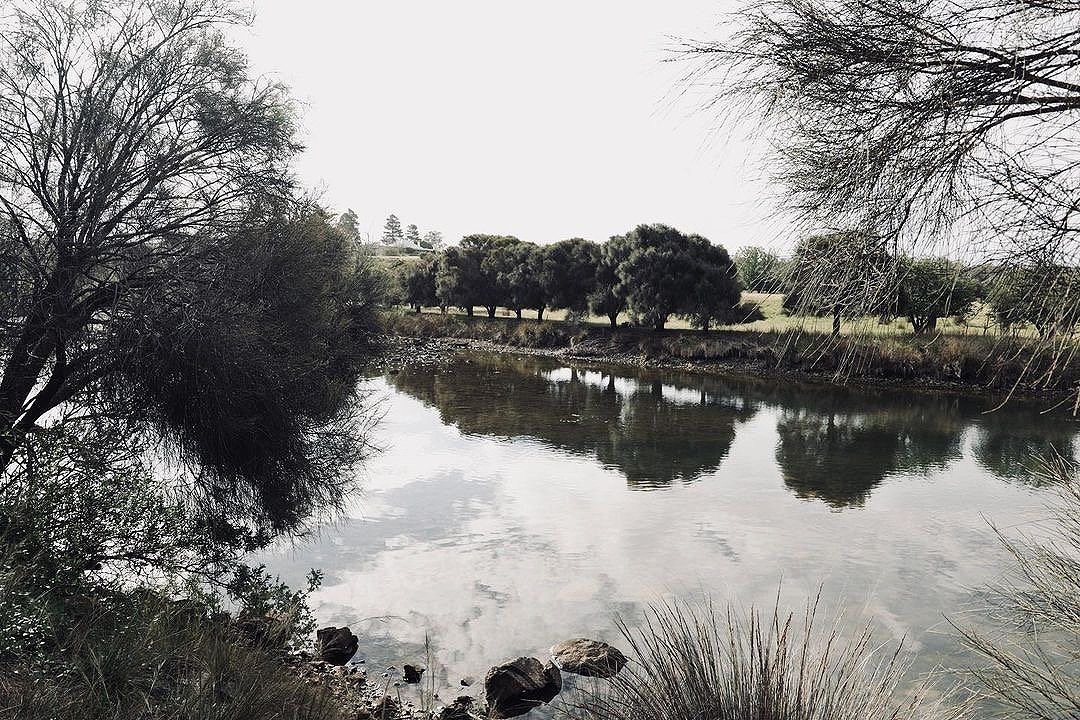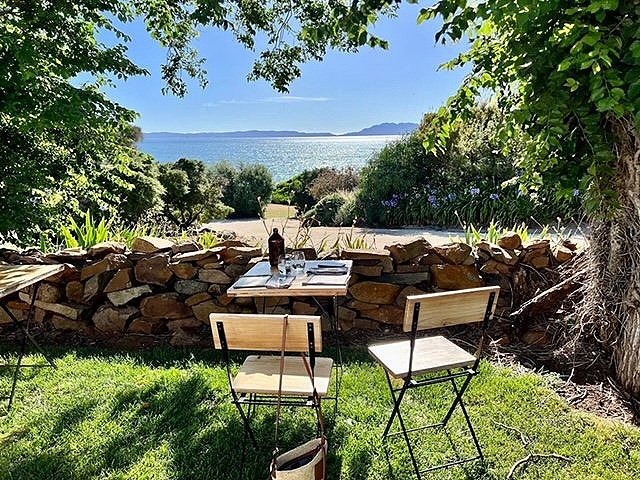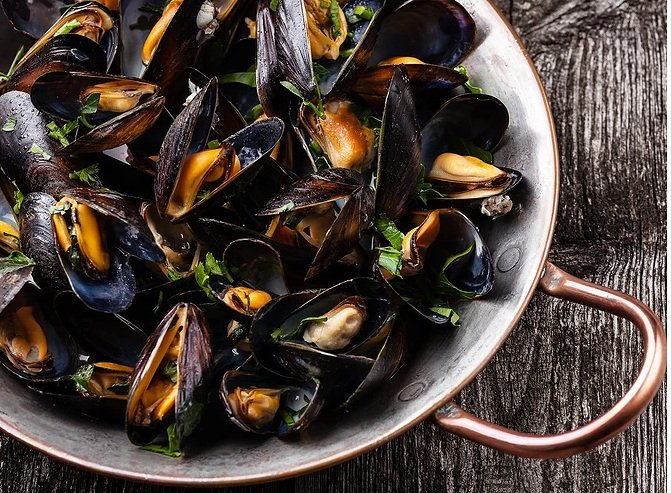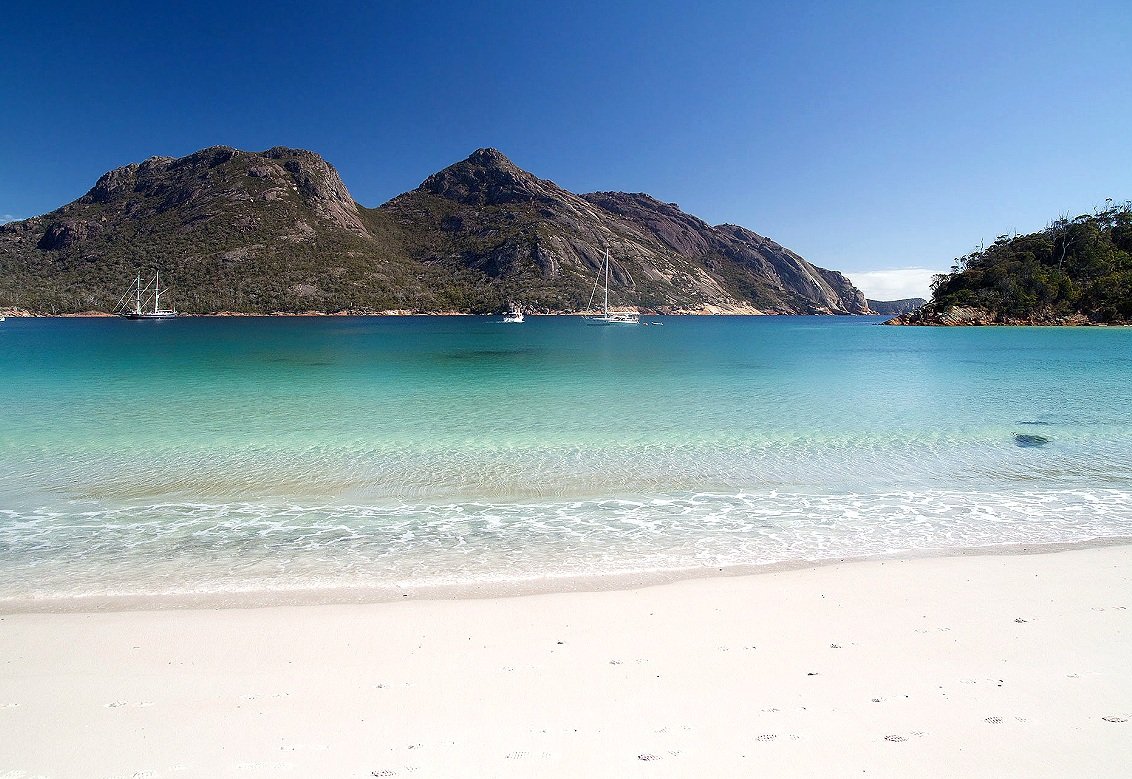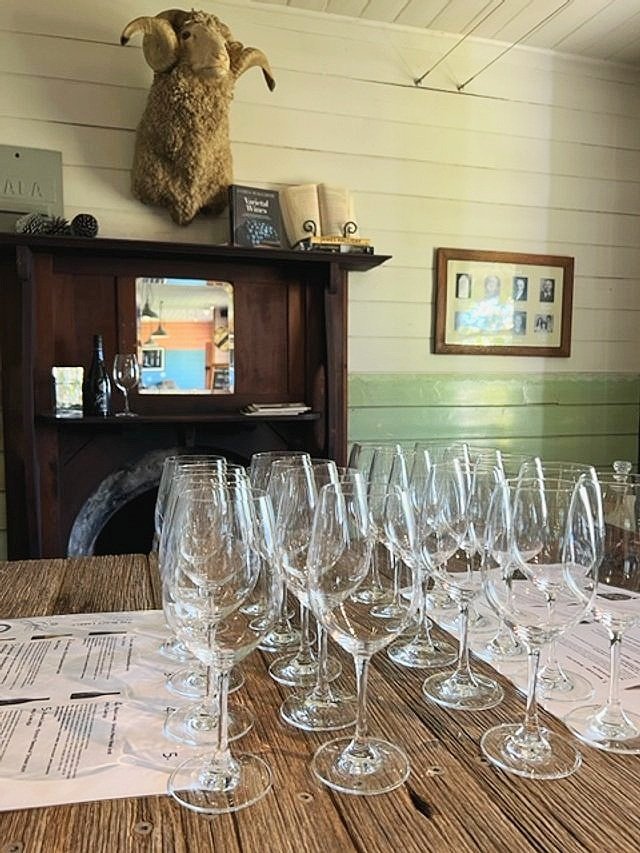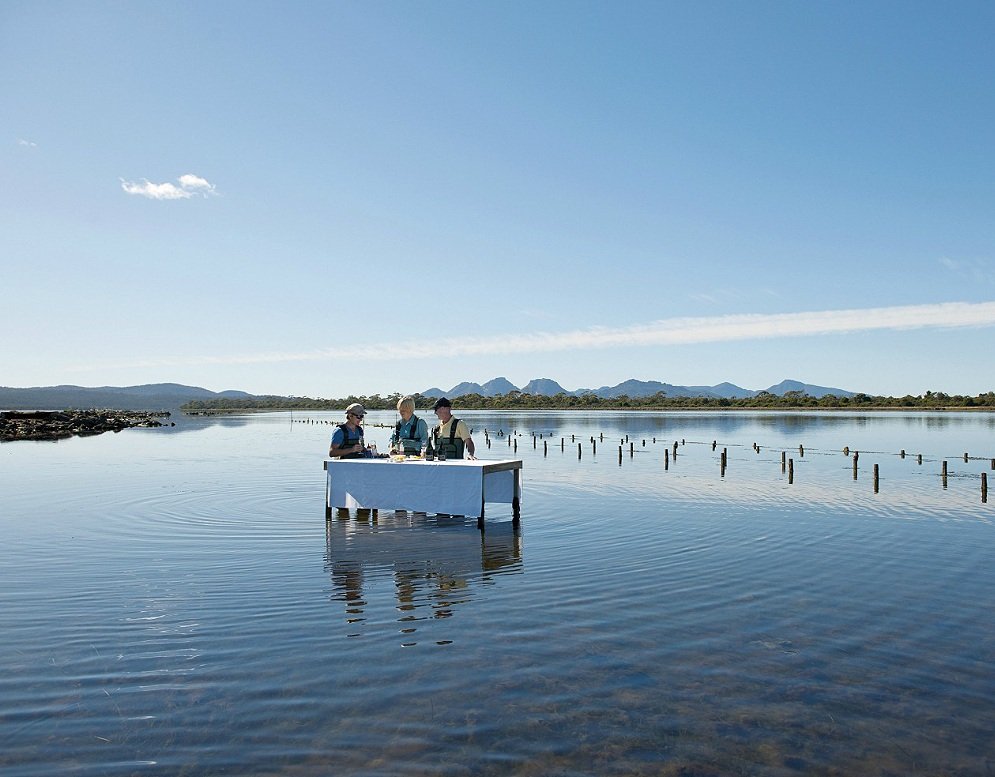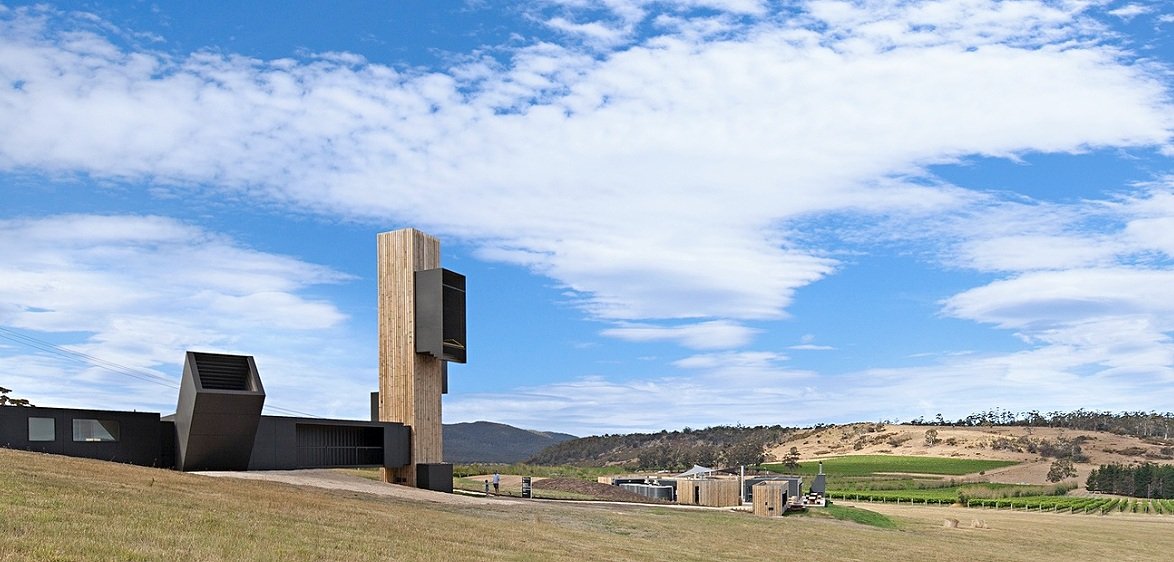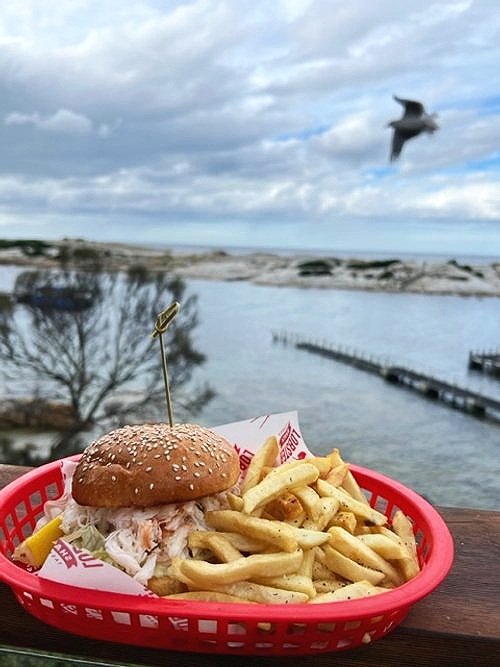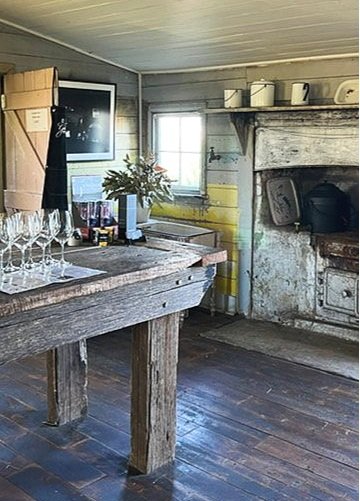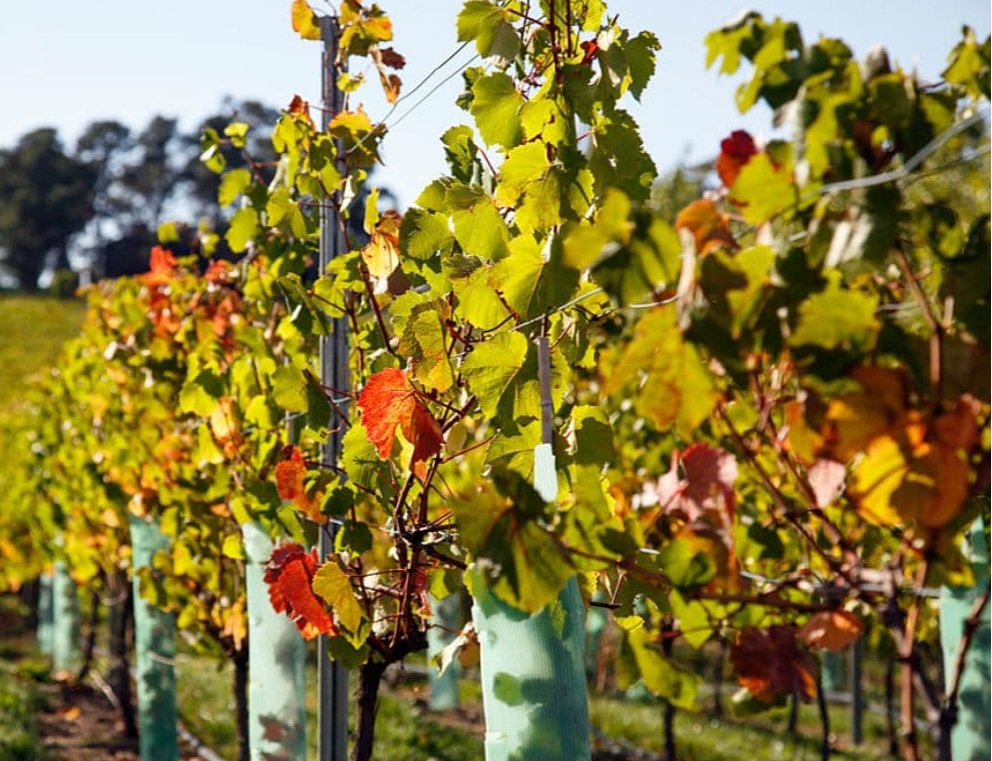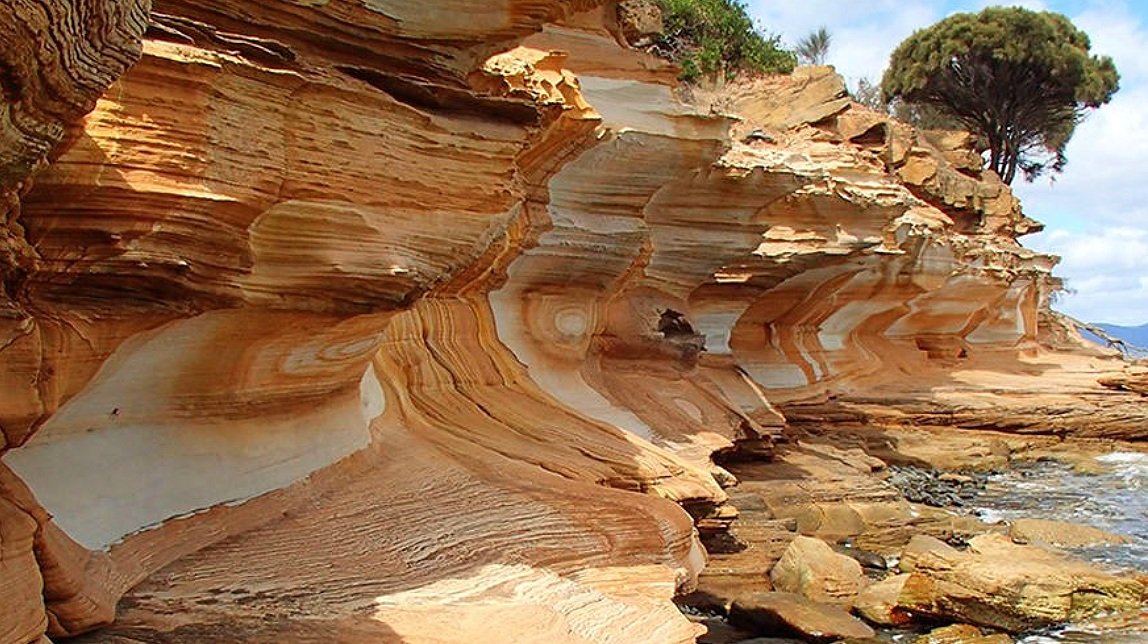Nestled in the hillside overlooking the ever-changing colours of Great Oyster Bay and the Freycinet Peninsula, Piermont Retreat is a sanctuary of understated luxury hidden in Tasmania’s remote East Coast.
A haven for idleness and solitude the 230 hectares of well-arboured grounds was envisioned several decades ago by a German forester, the retreat is built around a 180-year-old Georgian Homestead with a small community of sustainably built lodgings scattered amongst the gumtrees, she-oaks and dune grass along a private beach.
A leisurely two-hour drive north of Hobart and only a 5-minute drive south of the popular coastal village of Swansea, the retreat is a stone’s throw from gourmet producers, wineries and world acclaimed beaches and nature walks.
Sleep
Lay your head in one of Piermont’s stone and rammed earth chalet style cottages that hug the shoreline. These one-, two- and three-bed cottages have log fires, full kitchens and decks with views across Great Oyster Bay and only steps to the sandy shores. Nestled on the hillside behind are the Suites with their high-pitched washed wood ceilings, each contain a comfortable, well-dressed bed and sofa with French doors that open onto a generous elevated deck. Expansive spa bathrooms with sea views and cosy bedrooms provide a luxurious yet uncomplicated base in which to unwind.
The Restaurant
At the heart of the retreat is the Homestead Restaurant, housed in the magnificent original home with views that stretch over the bay. The award-winning chef weaves his magic using produce sourced from neighbouring organic farmers and winemakers to curate a constantly evolving, seasonally inspired menu that celebrates the region’s diverse flavours. Here the fire roars in winter, curl up on the coach with a dozen freshly shucked Tasmanian Pacific oysters complimented by a local drop from a nearby cellar door or indulge in a leisurely lunch or dinner of grass-fed eye fillet from the green pastures of nearby Cape Grim and heirloom vegetables planted specifically for Piermont by small growers in Launceston.
Do:
You can do as little or as much as you want in this hidden paradise.
Immerse yourself in nature and wander the shores of its two private beaches.
Wake up early one morning and throw your doors open, climb back into bed to watch the show… the most spectacular Tasmanian East Coast sunrise.
Take a plunge in the river front outdoor pool
Enjoy a hit of tennis on the private court before lunch.
Take the kayaks out onto the mirrored waters of Great Oyster Bay
Grab a book from the Homestead library, some Tasmanian wine from the provedore and get cosy on the deck.
Pack some local produce and take your loved ones to Spiky Beach or Cowrie Beach for a picnic
Head to the polo field and feed the horses
In Summertime attend a show in the rustic stone amphitheater
At sunset take in the uninterrupted sight of the Hazards mountains blushing pink beyond the bay whilst savouring a smooth Pinot Noir made from grapes grown just minutes away.
Further Afield
Spread along the coastline here are some of Tasmania’s most celebrated wineries and providores. Follow the winery trail though the hills and taste the exquisite cool-climate Pinot Noirs, Rieslings, Pinot Gris and Roses which are availbale to sample at the historic celllar doors of Sping VAle, Milton, Gala Estate and Freycinet.
Pop on some waders, wade out into the waters, harvest oysters straight off the rack, and enjoy an authentic oyster farm tasting experience, it doesn't get any fresher than eating oysters fresh out of the ocean with Oyster Bay Tours
Walk the Hazards over to the world-renowned Wineglass Bay and explore the magnificent Coles Bay area.
A visit to Kate’s Berry Farm
Drop into the Lobster Shack in the picturesque seaside town of Bicheno and savour one of their famous Lobster Rolls on their expansive deck with views out over Governor Island Marine Reserve. Afterwards wander through their maritime museum and learn abou the history of the seafood industry in Tasmania.
Board the Ferry at Triabunna and escape to Maria Island for the day. Here history, protected wildlife and striking natural formations are to be found. Stroll through the ruins of the 1825 Darlington convict settlement or immerse youself in the islands wilderness.


